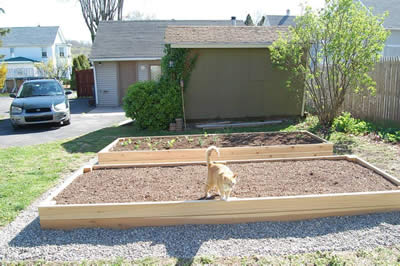One effective method of removing weed seeds from your vegetable garden beds is to bake them out with black plastic. We first heard about this method from eco-landscaping and organic gardening expert The Yard Fairy.
At the beginning of the gardening season, lay black plastic down over your garden beds and let it sit for several weeks. The black attracts the sun and heats the ground to high temperatures, resulting in a “greenhouse effect” that kills any existing weed seeds that may be living in your soil. Remove the plastic when you’re ready to prep your garden beds for planting.
Another good method is to put down a layer of newspaper. Dampen the newspaper with water each day. Beneath the paper, tiny seeds will germinate. The newspaper will prevent sunlight from reaching the seedlings once they sprout. This will effectively kill off any seeds; and the plant matter left behind will biodegrade, adding valuable nutrients to your garden soil. (Read more about weed control from this article on Wikipedia).
Where do the weed seeds come from?
Weed seeds can be leftover from last year’s vegetable garden. When we’ve failed to do the plastic “bake” method for our home garden, we found lots of little tomato and squash seedlings growing in strange places.
Weed seeds can blow in from anywhere. If your next door neighbor grew watermelons last year, you may discover that you, too are now growing watermelons this year.
Weed seeds may also be present in the soil that you purchase from a nursery or garden supplier. In addition to the tomatoes and squash, we also had a few hearty corn stalks popping up amidst our lettuces, tomatoes and eggplants. Corn is really difficult to remove from your garden. Our strategy was to continuously trim it to keep the corn plant from taking over and killing everything else.
Weed seeds can end up in your garden when you mulch with fresh grass clippings. You worked really hard to kill the grass that was growing in that spot before, so why create the same exact problem? You can still mulch with grass clippings; just compost them first. Once they have begun to break down, mix them in with the rest of your composted materials to create a rich fertilizer. Turn this into your existing garden soil before planting your first vegetable sprouts and seeds. Later, once the plants begin to grow, you can surround them with this same mixture for added nutritional benefits.
